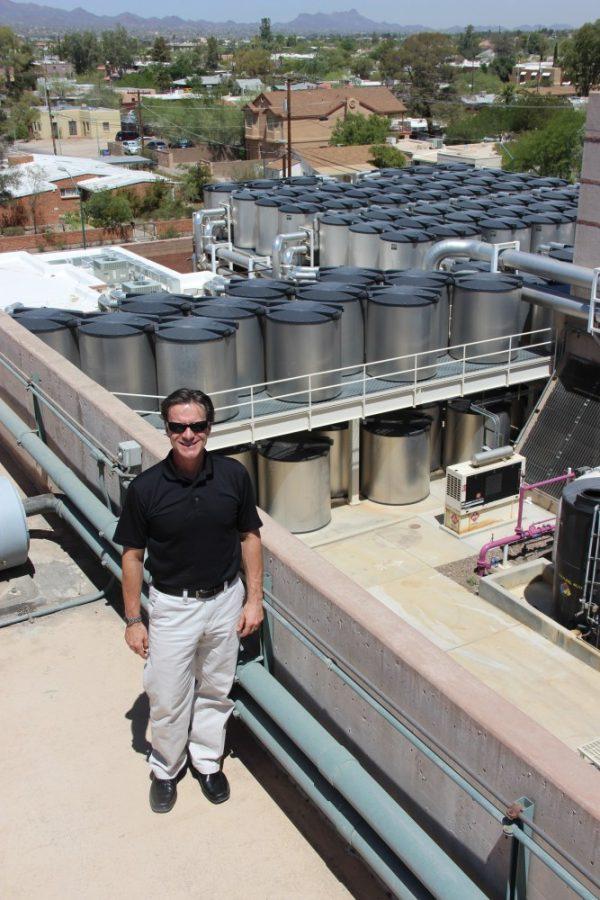As temperatures continue to rise, the UA is working to maintain its campus throughout the summer, particularly through air-conditioning and water usage.
Whether its freezing tons of water, or firing up a jet engine, Facilities Management has several strategies to operate campus while being both evironmentally friendly and sustainable.
As opposed to having stand-alone equipment at each building, the air conditioning for more than 200 campus buildings is provided by three central plants. Inside these facilities, huge pumps and “chillers” cycle water throughout campus, via a network of pipes. The water is cooled inside the chillers and pumped to the buildings, where it is used to cool the air before returning to the chiller.
“This is an extremely efficient way to cool the campus,” said Mark St. Onge, superintendent of Facilities Management. “The dollar savings by doing this is tremendous compared to what you would see in your home.”
Another unique feature of the UA’s cooling system is the use of “thermal ice plants” which freeze water at night to be used during the daytime. The ice-cold water is utilized when the day is at its hottest, and electricity is most expensive. By avoiding electrical usage during peak-hours, the strategy is beneficial both economically and environmentally, and most campuses do not have such technology, St. Onge said.The campus also uses an energy management strategy that utilizes two “cogeneration units,” which are basically jet engines that are used to produce electricity and heat.
Natural gas is used to spin a turbine which in turn spins a generator and produces electricity, St. Onge said. The heat produced is then used to boil water, creating steam which is used to heat buildings.
“So, for one input, we get two outputs: electricity and steam, or heat,” he said. “It makes it very reliable and very efficient.”
The turbines produce about a one-third of the electricity used by the UA and the University of Arizona Medical Center, St. Onge said. In addition to air-conditioning, water usage is a major concern for Facilities Management.
High-efficiency faucets as well as waterless urinals have been installed in many buildings, said Chris Kopach, assistant vice president of Facilities Management.
By using reclaimed water on the many sports fields and lawns on campus, the university is able to further reduce its impact on the environment.
In 2011, the department began using an organic fertilizer on the UA Mall, which also led to increased efficiency.
“It’s getting better roots underneath which are more efficient in reducing our water usage,” Kopach said.
Many of the trees and shrubs on campus were selected for their suitability to the desert environment, he said.
Finally, several buildings on campus are equipped with water harvesting systems that collect rainwater in basins that feed surrounding plants, he said, reducing the need for irrigation.
“Any of the water that would come off the rooftops, and would just go on to the street, we try to capture that water,” Kopach added.
All these strategies are meant to provide the UA with sustainable and affordable ways to stay “green” in the red-hot heat of summer.
Joe Abraham, director of the Office of Sustainability, said that UA has a long history of being environmentally responsible.
“It’s everything from how we build our buildings and maintain them, to the landscaping, to all the academic and research work that goes on, and the programming through student affairs,” Abraham said. “It’s something that the university has a lot of pride in.”









